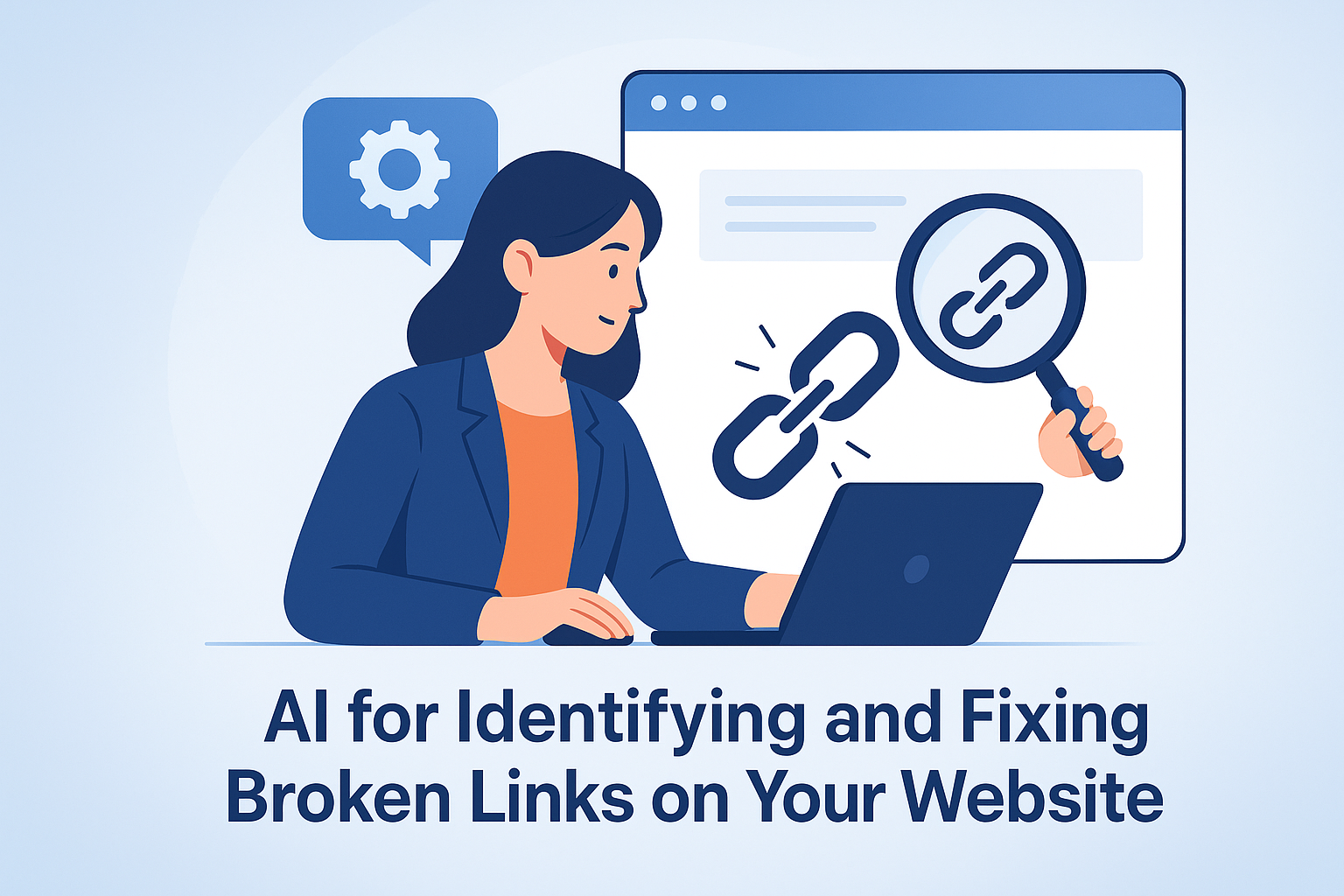If you’re publishing quality content but your rankings and traffic are stalling, the issue might not be your topic or your backlinks—it could be keyword gaps.
A keyword gap happens when:
- Your page ranks for a few core terms, but misses semantically related keywords
- Your competitors rank for keywords your page doesn’t mention at all
- Google understands the surface intent of your content—but not its depth
The result?
- You don’t rank for high-intent queries you should be targeting
- You miss out on long-tail keyword traffic
- Your content falls short of achieving topical authority
With AI, you can now identify and fill these gaps faster than ever—no spreadsheets or guesswork needed.
In this guide, we’ll show you how to:
- Use DIYSEO GPT to audit keyword coverage on existing pages
- Use the SEO AI Writer to add missing keyword topics naturally
- Use the Link Marketplace to boost performance of keyword-expanded content
What Are Keyword Gaps?
Keyword gaps refer to the missing phrases, topics, and semantic terms that your content should include in order to fully satisfy a user’s search intent and rank competitively.
Types of Keyword Gaps:
| Gap Type | Description |
|---|---|
| Semantic Gaps | You haven’t covered related phrases or questions Google expects |
| Intent Gaps | Content doesn’t align with all stages of the buyer journey |
| Competitive Gaps | Other pages rank for keywords you don’t even mention |
| Structure Gaps | Keywords are buried in text without support from headings or metadata |
AI solves this by analyzing ranking data, comparing competitors, and surfacing opportunities to expand your content meaningfully.
Step-by-Step: Identifying Keyword Gaps Using AI
✅ Step 1: Audit Keyword Coverage with DIYSEO GPT
Start with the Top Queries by Clicks and Query Position Changes prompts in DIYSEO GPT.
📈 Top Queries by Clicks
Shows which keywords are already driving traffic—and more importantly, which related terms you’re not yet ranking for.
Ask:
“What keywords am I ranking for on /ai-seo-strategy—and what related queries am I missing?”
📉 Query Position Changes
Helps you identify ranking losses that may be tied to incomplete keyword coverage.
Ask:
“Which keyword opportunities did I lose visibility on this month that I’m not addressing well on-page?”
✅ Step 2: Use Competitive Intelligence to Find Gaps
If enabled in DIYSEO GPT, run the Topic Gap Analysis prompt to compare your content against top-ranking competitors.
Ask:
“Which related keywords do top-ranking pages for ‘AI SEO tools’ include that I haven’t yet covered?”
This generates a gap list of valuable, relevant terms you can use to enhance the depth and breadth of your content.
✅ Step 3: Use SEO AI Writer to Fill Keyword Gaps Naturally
Once you have a list of missing or underutilized keywords, use the SEO AI Writer to:
- Add new sections to support uncovered topics
- Rewrite weak paragraphs to include semantically related phrases
- Insert long-tail keywords in headers, bullets, and FAQs
Prompt Examples:
Add a New Section:
“Write a 300-word section on ‘automated backlink analysis’ to add to a blog post about AI SEO audits. Include the keyword naturally and format it with an H3 heading.”
Rewrite with Keyword Inclusion:
“Rephrase this paragraph to include the keyword ‘GPT-powered SEO tools’ without affecting readability.”
Write Supporting FAQs:
“Create 3 FAQ questions and answers that include these missing keywords: ‘AI keyword clustering,’ ‘semantic optimization,’ and ‘real-time SEO data.’”
✅ Step 4: Reoptimize Metadata for Keyword Relevance
Often, keyword gaps exist in your meta title and description, which can limit CTR and snippet eligibility.
Prompt:
“Write a meta title under 60 characters and a meta description under 155 characters for the keyword ‘AI-powered content briefs for SEO.’”
Use this to re-align your metadata with current keyword focus and searcher intent.
✅ Step 5: Adjust Internal Links to Support Keyword Clusters
Use the Page-to-Page Link Suggestions prompt in DIYSEO GPT to create internal links between pages targeting related keyword groups.
Prompt:
“Which of my current posts can link to the newly optimized /ai-content-tools page using relevant long-tail keywords as anchor text?”
Use SEO AI Writer to place those links seamlessly.
Prompt:
“Insert a contextual link to /ai-content-calendar using the anchor ‘AI-driven content scheduling tool.’”
This strengthens semantic relationships and distributes keyword relevance across your domain.
Bonus: Promote Keyword-Rich Pages with Link Marketplace
Once you’ve filled keyword gaps and reoptimized your content, use the Link Marketplace to amplify authority.
Strategy:
- Choose keyword-expanded blog posts or landing pages
- Filter for publishers in your niche (SEO, AI, content marketing)
- Build backlinks to pages newly targeting high-value phrases
This ensures your updated content:
- Gets crawled and reindexed faster
- Gains trust for the newly added topics
- Benefits from a ranking boost driven by fresh topical coverage
Real-World Example: Closing the Gap and Climbing the Ranks
Problem: A blog post titled “How to Use AI for SEO” ranked well for a few core terms but missed dozens of high-intent long-tail variations.
DIYSEO Fix:
- Ran Top Queries by Clicks → Identified that users were searching “AI for keyword grouping” and “AI for technical SEO,” but the page didn’t include these phrases
- Used SEO AI Writer to:
- Add two new H3 sections with those keywords
- Rewrite intro and FAQ with semantically relevant phrasing
- Updated metadata to reflect broader topic range
- Added internal links to two supporting guides
- Built 3 backlinks via Link Marketplace from AI content blogs
Results:
- Ranked in top 5 for three new long-tail phrases
- Organic traffic increased by 41% within 30 days
- Average time on page increased by 55 seconds
- Page featured in People Also Ask box for “What’s the best AI SEO tool?”
Keyword Gap Optimization Workflow with DIYSEO
| Step | Tool | Task |
|---|---|---|
| Discover missing keywords | DIYSEO GPT – Query Analysis, Topic Gap | Audit for semantic and intent gaps |
| Expand on-page coverage | SEO AI Writer | Add content for missing phrases |
| Rewrite weak sections | SEO AI Writer | Insert keywords naturally |
| Optimize metadata | SEO AI Writer | Align title and description |
| Strengthen internal linking | GPT + Writer | Build keyword-relevant pathways |
| Reinforce with backlinks | Link Marketplace | Promote updated content for faster ranking |
Final Thoughts
Keyword gaps are silent performance killers. You may have great content—but if it doesn’t align with the full scope of what your audience is searching, you’re leaving rankings (and revenue) on the table.
With DIYSEO, you can:
- Identify keyword gaps using GPT-powered search data and content comparisons
- Update content quickly with SEO AI Writer’s structured, keyword-rich enhancements
- Drive visibility using targeted backlinks from the Link Marketplace
Complete coverage wins in modern SEO—and AI makes that coverage easy, fast, and scalable.
Frequently Asked Questions
1. What are keyword gaps, and why are they important for SEO?
Keyword gaps are the missing keywords that your content does not currently cover but are commonly used by your target audience or competitors. Identifying and addressing these gaps are crucial for SEO because they represent opportunities to enhance your site’s visibility in search engine results. When search engines crawl your page, they look for relevant keywords that match user queries. If certain keywords your audience frequently uses are missing from your content, you miss valuable opportunities to attract organic traffic. By identifying keyword gaps and incorporating them into your content, you can more effectively meet the needs of your audience, increase engagement, and ultimately improve your site’s ranking in search results.
2. How can AI help in identifying keyword gaps on existing pages?
AI can revolutionize the way you identify keyword gaps by leveraging machine learning algorithms and vast amounts of data. With AI-powered tools, you can analyze your existing content, find missing keywords, and even predict trending keywords your competitors target. These tools can perform a comparative analysis of your content against top-ranking pages for your target keywords, highlighting areas where your content might be lacking. Additionally, AI can automate the process of ongoing monitoring and analysis, ensuring that your content remains optimized as user search behavior and trends change. These AI tools allow you to be more proactive and strategic, saving you time while significantly enhancing your SEO efforts.
3. Are there specific AI tools recommended for identifying keyword gaps?
Yes, there are several AI tools specifically designed to help identify keyword gaps. Some of the most popular ones include SEMrush, Ahrefs, and Moz. These platforms use advanced algorithms to collect data from search engines, assess your web page’s content, and measure it against top-ranking sites to pinpoint missing keywords. They offer features like keyword suggestions, competitive analysis, and trend predictions to give you actionable insights. Additionally, Google’s own Keyword Planner can be a useful tool, although not AI-driven, it leverages a vast database to provide keyword suggestions and search volume information. Including these AI tools in your SEO stack could provide a competitive edge by facilitating thorough keyword research and content optimization.
4. What steps should I take after identifying keyword gaps on my existing pages?
Once you identify keyword gaps, it’s essential to create a strategic action plan to address them efficiently. Begin by prioritizing the keywords based on search volume, relevance, and your current content strategy. Then, look at your existing taxonomy and content structure to see where and how these gaps can be filled. It often involves updating current content, crafting new articles, or even developing entirely new sections or topics for your website. Collaborate with your content and SEO teams to integrate these keywords naturally into your content. Ensure that the new terms enhance the value delivered to your audience rather than just stuffing them into the content. Finally, monitor the performance of these updates in terms of search rankings and user engagement to determine their effectiveness.
5. How frequently should I use AI tools to check for keyword gaps?
There’s no one-size-fits-all answer to this, as it largely depends on the dynamics of your industry and the pace at which your content strategy evolves. However, it’s generally advisable to review your keyword strategy and check for gaps at least quarterly. Regularly conducting keyword audits allows you to promptly adjust your content tactics in response to changes in search algorithms, user preferences, and emerging trends. If you are working in a fast-paced industry with highly competitive SERPs, more frequent checks—say, on a monthly basis—might be necessary. Make ongoing optimization an integral component of your SEO practice by leveraging AI tools to help streamline this process and maintain your competitive edge.



